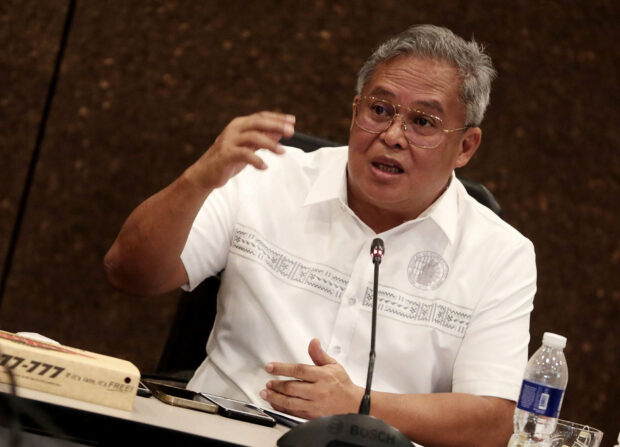While the country’s prisons are suffering from congestion, the Bureau of Corrections (BuCor) says it has idle lands that the government can tap to boost its food production.
Director General Gregorio Catapang Jr., BuCor chief, is also offering the services of inmates who can till these farms that are also seen to produce rice, especially now that the prices of the staple have increased.
In a statement on Monday, Catapang said that except for the Correctional Institution for Women in Mandaluyong City, BuCor has six operating prison and penal farms nationwide with “80 to 90 percent” of its more than 47,000 hectares (ha) total land area available for farming and more than 50,000 inmates as manpower.
“The government is spending P120,000 for every PDL (person deprived of liberty) each year, but they were not being made relevant [before they get reintegrated to their communities],” he said.
“If we are lucky [enough] to plant rice in the entire Iwahig, maybe we can help in lowering the prices of rice,” Catapang added.
Iwahig model
The Iwahig Prison and Penal Farm (PPF) in Puerto Princesa City, Palawan, hosts a pilot project for agrotourism sites and food production areas under a joint memorandum of agreement with the Department of Justice and the Department of Agriculture. At least 501 ha of the 28,326.41-ha Iwahig will be utilized for the project.
According to BuCor, the following facilities have idle lands: Davao PPF in Davao del Norte province with 8,445.13 ha; Sablayan PPF in Occidental Mindoro province (8,327 ha); Leyte Regional Prison in Abuyog, Leyte (861.6 ha); and San Ramon PPF in Zamboanga City (664.74 ha).
Meanwhile, New Bilibid Prison (NBP) in Muntinlupa City has a total land area of 375.61 ha, of which 200 ha are idle.
By October, Catapang said BuCor would put up a “Pambansang Bagsakan ng Bigas para sa Mamamayan” or PBBM (taken after President Marcos’ initials) at the NBP reservation to sell cheaper rice as it would provide a direct farm-to-market link and would eliminate middlemen.
He noted that the NBP complex, set for closure and transfer by 2028, could be used as a food terminal so produce from north Luzon could easily reach areas in southern Metro Manila and nearby provinces.
“Let’s make our PDLs relevant… If we can make them work so that they can generate [income for themselves] and for the BuCor, [then] the bureau in the future [may] no longer need to depend on budget allocation from the national government,” he said. INQ
READ: DAR, farmers scale up urban farming
